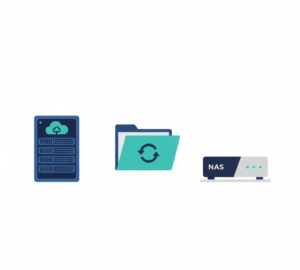Migrating Data from Egnyte to SharePoint Online: A Step-by-Step Approach
Imagine you’re moving your important data from Egnyte to SharePoint Online, and deadlines are closing in. How can you make sure nothing goes wrong? Let’s dive into the key steps to ensure a smooth, seamless migration process without losing your critical files.
Understanding the Migration Process
Before Egnyte to SharePoint migration, you need to break down the migration into manageable steps that address potential challenges along the way. Migrating from Egnyte to SharePoint is a simple transfer of files which enhance your Enterprise Content Management (ECM) system. Here’s how to tackle the process strategically, without leaving any data behind.
A Strategic Approach to Migration
- Assess Your Data Needs: Before you even think about exporting data, take a moment to assess what you have in Egnyte. Identify which files are essential for your operations and which can be archived or discarded. This initial assessment will help streamline the migration process and reduce clutter in your new SharePoint environment.
- Establish a Clear Structure: Set up a clear structure within SharePoint. Think about how you want your data organized—consider folders, permissions, and access levels. This will make the post-migration life of the end user much easier in finding information.
- Choose the Right Tools: Success in migration will be partly based on the proper selection of tools to perform the migration. Look for solutions that have experience with Egnyte to SharePoint Online data migration; they provide features that automate parts of the process and ensure data integrity.
- Plan for User Training: A successful migration is not just about transferring files; it’s also about ensuring users know how to use SharePoint effectively. This involves planning training sessions on new features of the platform, how collaboration should be done, and how access can be provided to migrated content.
- Implement a Testing Phase: Before fully committing to the migration, conduct a testing phase with a small subset of data. This way, you can identify any potential issues early on and make necessary adjustments without affecting the entire organization.
- Execute the Migration: With everything in place, it’s time to execute the migration. Here’s what you should focus on:
- Real-Time Monitoring: Monitor the process closely for any mistakes or delay in the process. This helps you catch errors early and make adjustments as needed.
- Quick Issue Resolution: If any errors or data discrepancies arise, address them immediately to avoid interruptions or loss of information. This minimizes downtime and keeps the migration on schedule.
- Team Coordination: You have to ensure clear communication with your team to keep everyone informed about the progress or any potential adjustments.
- Data Integrity Checks: Also, remember to verify that migrated data retains its original structure, permissions, and metadata. Performing these checks will confirm that your information is accurately transferred and readily accessible in the new environment.
Post-Migration Review
After the migration:
-
Test your SharePoint structure and accessibility
-
Ensure metadata and permissions have been transferred properly
-
Gather feedback from users to improve future rollouts
Summing Up
By evaluating your data needs, setting up a clear structure, and using the right tools, you minimize the risk of issues. Proper user training and a testing phase also ensure everything runs smoothly.
Get a free demo : https://cloudsfer.com/contact-us/





